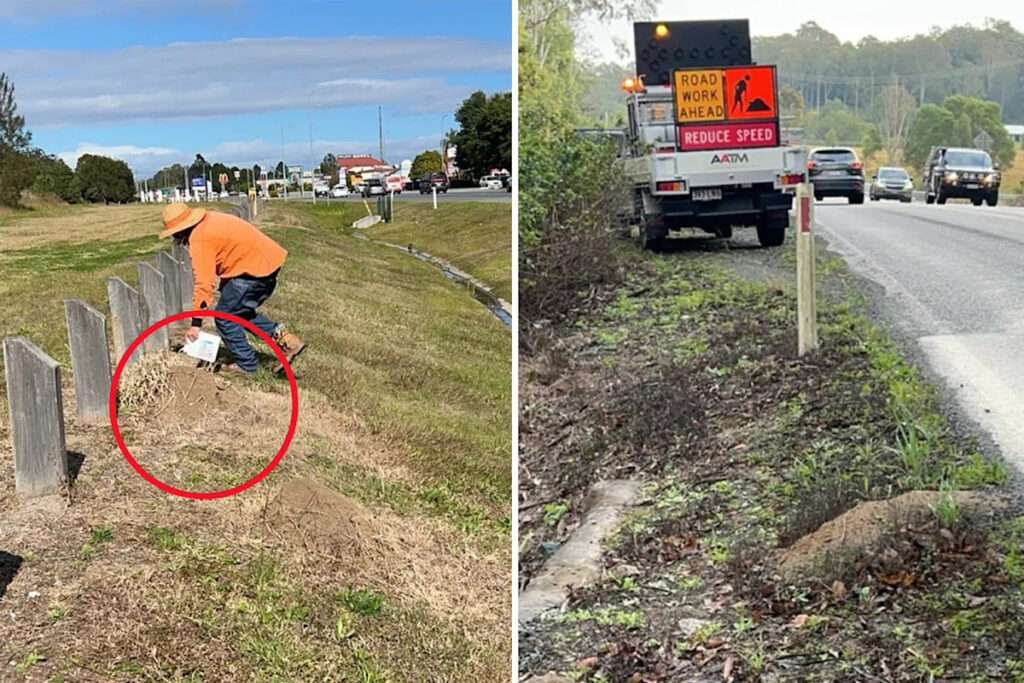
Authorities in Queensland are intensifying efforts to combat the notorious fire ant, an invasive pest that poses a significant threat to the state’s environment and economy. The Department of Transport and Main Roads (TMR) has disclosed that its commercial arm, RoadTek, treated nearly 250 fire ant nests across the state during July and August 2025. This initiative is part of a broader strategy to manage the threat, which spans approximately 850,000 hectares of land.
The treatment efforts are concentrated in high-risk areas such as Ipswich, Beenleigh, the Sunshine Coast, Lockyer Valley, Brisbane Metro, and the Gold Coast. These actions are integral to the National Fire Ant Eradication Program and the state-funded Fire Ant Treatment Program. Despite their small size, fire ants have a disproportionately large impact, prompting both public and governmental vigilance across Queensland. Earlier this year, the Queensland government bolstered the Fire Ant Suppression Taskforce with an additional $24 million, raising total funding to $61 million.
The Threat of Fire Ants
The Invasive Species Council’s Reece Pianta emphasized the gravity of the situation, stating that eradicating fire ants “has to be” Australia’s top priority in addressing invasive pests.
“It affects so many parts of our society. If we can’t deal with this problem, I don’t see how we can deal with any of the other thousands of invasive species facing our country,” Pianta warned.
Fire ants are aggressive insects that spread rapidly, often colonizing disturbed or open land such as road corridors, construction sites, and median strips. When disturbed, they attack in large numbers, delivering painful stings that can cause severe allergic reactions in some individuals. Beyond their impact on human health, fire ants pose a threat to agriculture by attacking livestock and damaging crops, and they disrupt ecosystems by preying on native species and damaging vegetation.
Government and Community Response
The TMR has highlighted the treatment program as a demonstration of the Queensland Government’s commitment to protecting communities, industries, and natural environments from further invasion.
“By acting now, we can prevent fire ants from spreading and protect Queensland’s communities, ecosystems, and economy,” the department stated.
The National Fire Ant Eradication Program is the largest biosecurity operation of its kind globally. While fire ants spread slowly on their own, human activities, particularly the movement of soil, mulch, and plants, can dramatically accelerate their spread. If left unmanaged, fire ants could devastate industries, disrupt supply chains, and establish themselves in new regions.
Strategies for Containment
To combat this, RoadTek teams employ a combination of granular baiting and direct nest injections to effectively treat infestations. These methods target worker ants and the queen to ensure colonies are destroyed rather than merely displaced. Treatments are strategically deployed in areas where fire ants are most likely to spread, with authorities coordinating efforts across government agencies, industry, and the community.
Authorities are urging Queenslanders to remain vigilant and report any suspected fire ant sightings. The distinctive reddish-brown ants typically build dome-shaped mounds with no visible entrance holes and are often found in sunny, open spaces such as lawns, paddocks, or roadsides.
Historical Context and Future Implications
Fire ants were first detected in Queensland in 2001, and while significant progress has been made, the pest remains a serious biosecurity concern. The ongoing battle against fire ants is a testament to the challenges posed by invasive species globally. As climate change and global trade continue to alter ecosystems, the risk of invasive species like the fire ant establishing themselves in new territories is ever-present.
The current efforts in Queensland could serve as a model for other regions facing similar threats. By investing in comprehensive eradication programs and fostering community awareness, authorities aim to mitigate the impact of invasive species and protect biodiversity. As the situation evolves, continued vigilance and adaptation of strategies will be crucial in the fight against fire ants and other invasive pests.
The Queensland government’s proactive approach, coupled with community involvement, underscores the importance of collective action in addressing environmental challenges. As the state moves forward, the lessons learned from the fire ant eradication efforts will likely inform future biosecurity initiatives both in Australia and worldwide.





